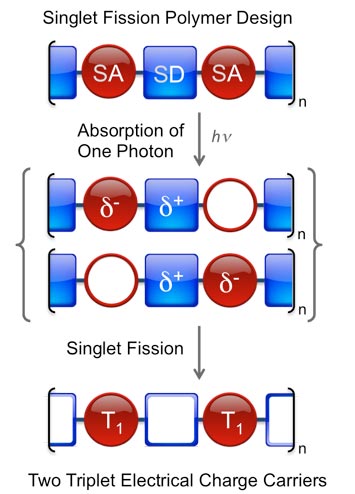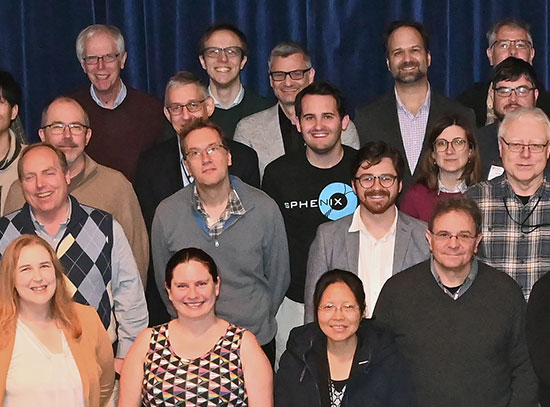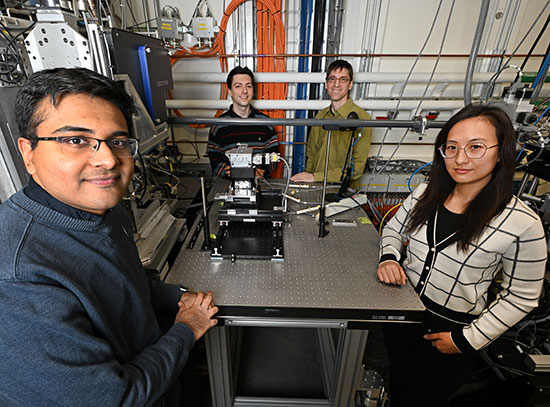Research Highlight: Solar Cell Polymers with Multiplied Electrical Output
January 19, 2016
What Is The Scientific Achievement?
 enlarge
enlarge
(top) A singlet fission polymer consists of alternating strong donor (SD) and strong acceptor (SA) units. (middle) One unit of light absorption leads to partial electric charges on neighboring SA and SD units which undergo singlet fission to produce (bottom) two triplet type electrical charge carriers.
One of the challenges in improving the efficiency of solar cells is that a portion of the incident light energy is lost as heat in the absorbing material. Here, we report a material that may enable a solar cell to recover some of that lost energy through a process called “singlet fission.” In singlet fission, one absorbed unit of light results in two electrical charge carriers via a multiplication process rather reducing the amount of heat that would be lost in a conventional cell. Critically, we demonstrate an efficient multiplication process on a single polymer chain, a type of plastic that can conduct electricity. These polymers work efficiently while dissolved in liquids, potentially allowing for industrial scale manufacturing of devices that utilize this phenomenon.
Why Does This Matter?
- Carrier multiplication occurs in single polymer resulting in 1.7 charge carriers per absorbed photon.
- We generalize a design framework based on strong charge transfer interactions along the chain of the polymer.
- Our strong acceptor units which enable singlet fission can be utilized in a wide variety of novel materials.
What Are The Details?
CFN Capabilities: CFN’s Advanced Optics Facility was utilized to quantify the rate and yield of the fission process using transient absorption spectroscopy. The CFN Computational Facility was utilized to understand the design requirements for this process.
Publication Reference
A design strategy for intramolecular singlet fission mediated by charge-transfer states in donor–acceptor organic materials
Erik Busby1,2†, Jianlong Xia1,3†, Qin Wu2, Jonathan Z. Low3, Rui Song3, John R. Miller4, X-Y. Zhu1,3, Luis M. Campos1,3 and Matthew Y. Sfeir2
1 Energy Frontier Research Center, Columbia University, New York, New York 10027, USA.
2 Center for Functional Nanomaterials, Brookhaven National Laboratory, Upton, New York 11973, USA.
3 Department of Chemistry, Columbia University, New York, New York 10027, USA.
4 Department of Chemistry, Brookhaven National Laboratory, Upton, New York 11973, USA.
† These authors contributed equally to this work.
Nature Materials 14, 426–433 (2015)
Acknowledgement of Support
This project was funded through the Center for Re-Defining Photovoltaic Efficiency Through Molecular-Scale Control, an Energy Frontier Research Center funded by the US Department of Energy (DOE), Office of Science, Office of Basic Energy Sciences under Award DE-SC0001085. L.M.C. thanks 3M Non-Tenured Faculty Award and the NSF CAREER (DMR-1351293) for funding the synthesis of the small molecules and control materials. X-Y.Z. acknowledges support by the National Science Foundation, DMR-1321405. We wish to thank M. Vengris (Vilnius University) for graciously providing his global analysis software package for our use. We also thank S. Wei for a sample of PFTDO1 and J. Hoy for additional cyclic voltammetry measurements. Research was carried out in part at the Center for Functional Nanomaterials, Brookhaven National Laboratory, which is supported by the US Department of Energy, Office of Basic Energy Sciences, under Contract No. DE-AC02-98CH10886, and in the Chemistry Department, Brookhaven National Laboratory through Grant #DE-AC02-98-CH10886, which also supports the LEAF Facility of the BNL Accelerator Center for Energy Research.
2016-6172 | INT/EXT | Newsroom








